Sustainable bioenergy for climate mitigation (Viewpoint)
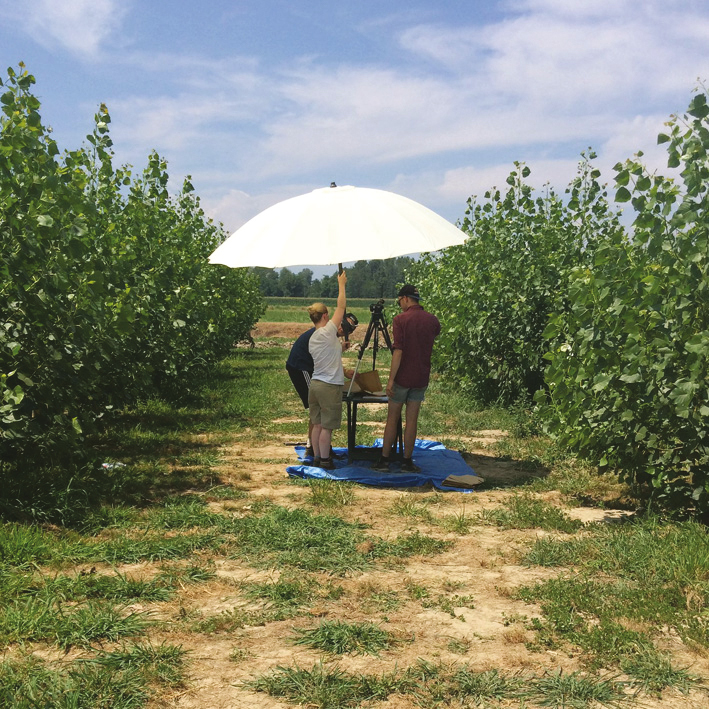
Annals of Botany 124: 513–520, 2019
doi: 10.1093/aob/mcz146
Bioenergy with Carbon Capture and Storage (BECCS) is an effective Negative Emission Technology (NET), but the crops required for this technology must be able to grow on marginal – poor quality – agricultural land and not compete with food crops. Taylor et al. describe the recent advances in identifying non-food tree and grass species suitable for bioenergy production on droughted, poor quality land. Defining the ideotype for drought tolerance in Populus, Miscanthus and Arundo that includes rapid stomatal responsiveness and vigour. Understanding the genetic basis of drought tolerance through GWAS studies is helping to resolve breeding targets for rapid bioenergy crops selection.
Authors: G Taylor, IS Donnison, D Murphy-Bokern, M Morgante, M-B Bogeat-Triboulot, R Bhalerao, M Hertzberg, A Polle, A Harfouche, F Alasia, V Petoussi, D Trebbi, K Schwarz, JJB Keurentjes, M Centritto, B Genty, J Flexas, E Grill, S Salvi, and WJ Davies.
Genomic index selection provides multi-objective breeding targets in Miscanthus (Viewpoint)

Annals of Botany 124: 521–529, 2019
doi: 10.1093/aob/mcy187
To inform strategies for Miscanthus (Poaceae) breeding for bioenergy, Slavov et al., propose an analytical framework that exploits genomics-assisted breeding potentially to achieve multiple breeding targets in the absence of a priori knowledge about the relative economic importance. They illustrate this approach through two hypothetical scenarios resulting in drastically different outcomes, compared to the current breeding population of Miscanthus sinensis, highlighting the need to evaluate breeding objectives and explicitly consider correlated responses in silico, prior to committing extensive resources to plant breeding activities.
Authors: Gancho T. Slavov, Christopher L. Davey, Maurice Bosch, Paul R. H. Robson, Iain S. Donnison, and Ian J. Mackay.
Optimizing water footprint of SRC willow cultivars (Research in Context)
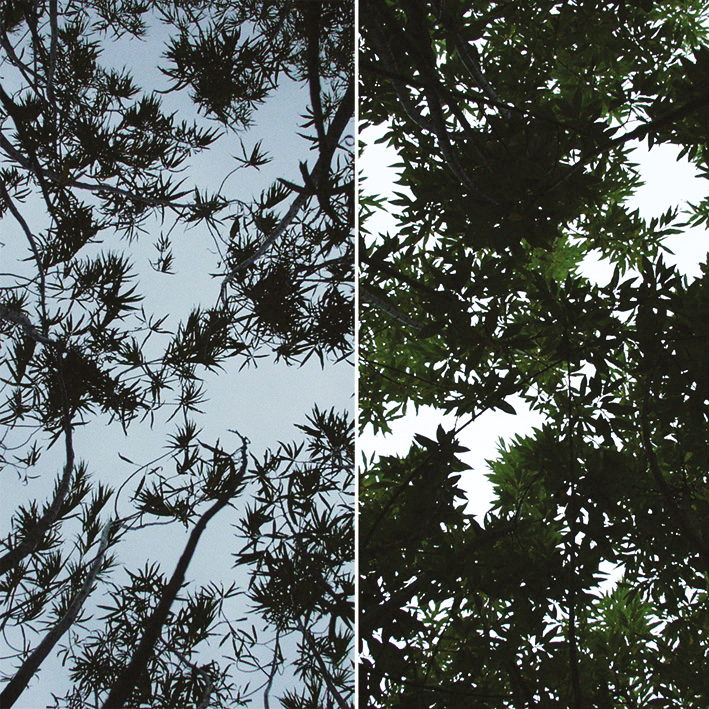
Annals of Botany 124: 531–542, 2019
doi: 10.1093/aob/mcz006
Willows (Salix spp. Salicaceae), grown as short rotation coppice (SRC), are an important source of biomass for bioenergy. Scenario simulations were performed with the crop model LUCASS for four cultivars in four climatic UK regions using different soil hydraulic properties. In warmer, drought-prone areas (e.g. SE England), the scenario simulations by Richard et al. predicted an advantage for cultivars with an open, narrow-leaved canopy with high photosynthetic capacity. These produced higher, less variable yields with lower water consumption compared to closed, broad-leaved canopy cultivars.
Authors: Benjamin Richard, Goetz M Richter, Marianna Cerasuolo, and Ian Shield.
Focused genotyping by sequencing (GBS) made easy (Technical article)
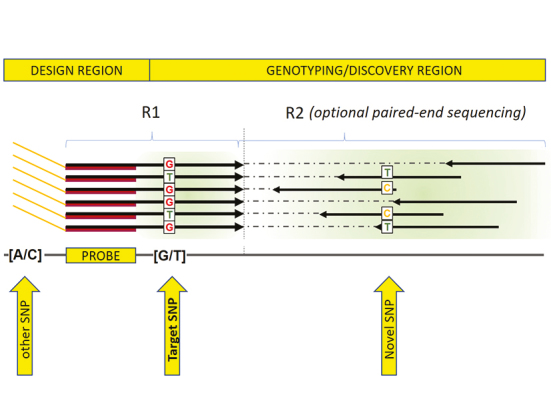
Annals of Botany 124: 543–551, 2019
doi: 10.1093/aob/mcz054
Reduction in sequencing costs can be coupled with smart enrichment technologies for the delivery of high-throughput and reproducible genotyping-by-sequencing (GBS) experiments. This will definitively close the gap between array-based technologies and next generation sequencing (NGS). The former are known for their robustness and efficiency in targeting (only) known polymorphisms, while the latter sequencing-based methods can maintain high flexibility and virtually unlimited SNP discovery potential. Scaglione et al. describe single primer enrichment technology (SPET) and show that this technology provides unprecedented efficiency in maximizing data yields and calling polymorphisms.
Authors: Davide Scaglione, Sara Pinosio, Fabio Marroni, Eleonora Di Centa, Alice Fornasiero, Gabriele Magris, Simone Scalabrin, Federica Cattonaro, Gail Taylor, and Michele Morgante.
Environmental stress affects Miscanthus biomass accumulation and sugar release
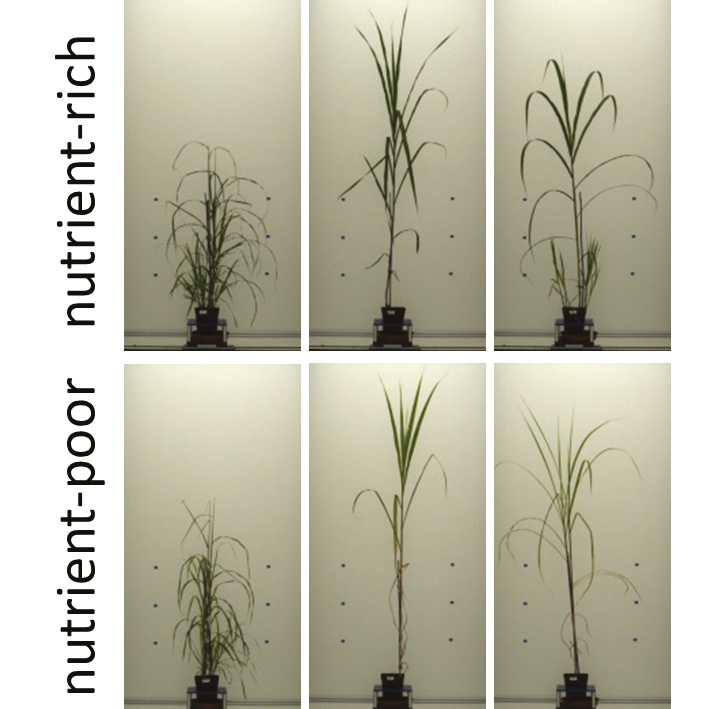
Annals of Botany 124: 553–566, 2019
doi: 10.1093/aob/mcy155
Miscanthus (Poaceae) has significant potential as a biomass crop for lower grade agricultural land. In this study by da Costa et al., three miscanthus genotypes were exposed to drought and nutrient stress to evaluate their impact on plant growth and cell wall sugar release. The results show that miscanthus can establish well under relatively nutrient-poor conditions, but importantly, cell wall sugar release by enzymatic hydrolysis, used as a biomass quality measure, was significantly affected by the different environmental conditions. Stress, genotype and organ (leaves and stems) all impacted sugar release. This highlights the importance of conducting biomass quality measures in addition to assessing yield, in a range of environments and genotypes.
Authors: Ricardo M.F. da Costa, Rachael Simister, Luned A. Roberts, Emma Timms-Taravella, Arthur B. Cambler, Fiona M.K. Corke, Jiwan Han, Richard J. Ward, Marcos S. Buckeridge, Leonardo D. Gomez, and Maurice Bosch.
Morphological and physiological traits determine Arundo drought recovery
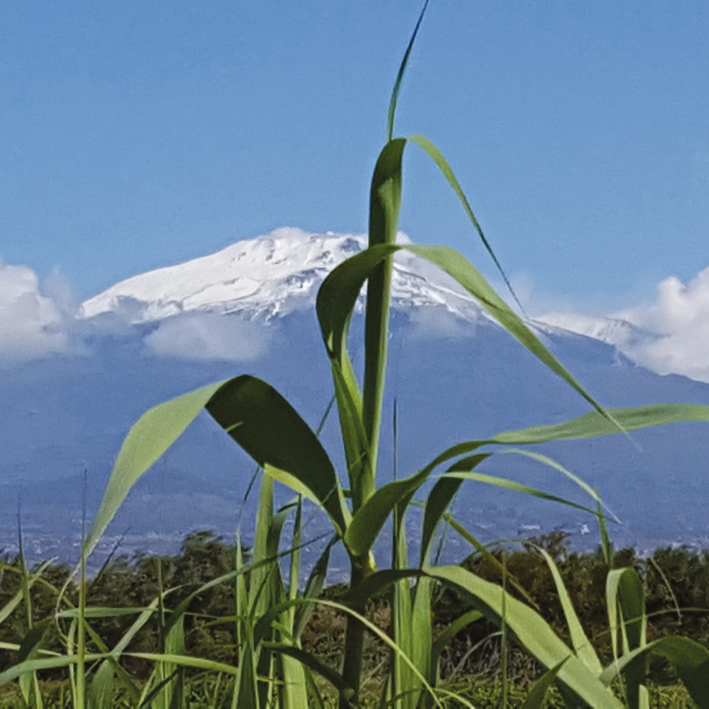
Annals of Botany 124: 567–579, 2019
doi: 10.1093/aob/mcy223
The giant reed (Arundo donax, Poaceae) is a promising novel biomass crop for semi-arid marginal lands that are not used for food production. Haworth et al. studied three ecotypes of A. donax collected from contrasting habitats with differing amounts of aridity. Over the growing season, giant reed performed well despite the impact of a strong Mediterranean summer drought. In plants subjected to drought, photosynthetic activity and growth continued later in the year, when soil water levels recovered after autumn rainfall. Future breeding strategies for improvement of A. donax for drought-prone environments should make selections on the basis of stem morphology and the retention of photosynthetic capacity, but overall, no clear ‘ideotype' for breeding could be identified from this research.
Authors: Matthew Haworth, Giovanni Marino, Ezio Riggi, Giovanni Avola, Cecilia Brunetti, Danilo Scordia, Giorgio Testa, Marcos Thiago Gaudio Gomes, Francesco Loreto, Salvatore Luciano Cosentino, and Mauro Centritto.
Poplar ABA receptors in Arabidopsis

Annals of Botany 124: 581–589, 2019
doi: 10.1093/aob/mcy225
Water deficit is the most important factor limiting plant productivity in the field. Poplar, a crop used for bioenergy production, can be cultivated on marginal land without competing for land use in food production. Poplar (Populus canescens, Salicaceae) has a high demand for water, which makes improving its water use efficiency (WUE) an attractive goal. Papacek et al. demonstrate that expression of a distinct abscisic acid (ABA) receptor of poplar in Arabidopsis can lead to increased WUE. The improved WUE was mediated by reduced stomatal conductance and sustained photosynthesis. The analysis is a case study supporting the use of poplar ABA receptors for improving WUE.
Authors: Michael Papacek, Alexander Christmann, and Erwin Grill.
Miscanthus germplasm collection for breeding
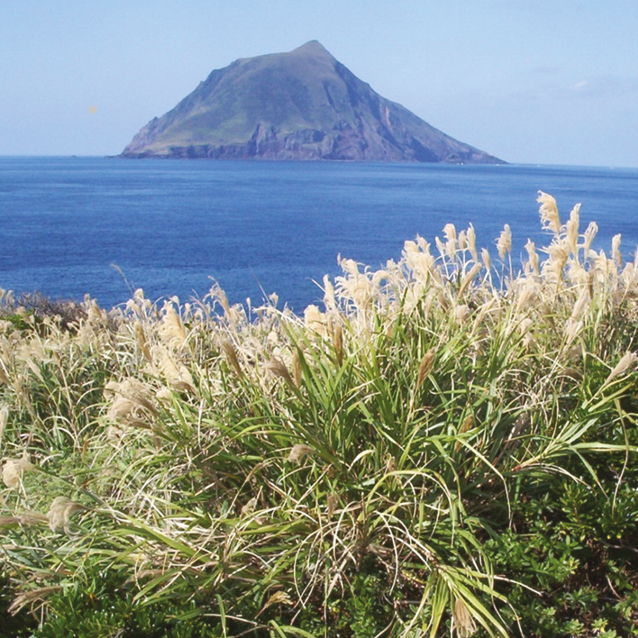
Annals of Botany 124: 591–604, 2019
doi: 10.1093/aob/mcy231
Genetically diverse germplasm forms the foundation of a successful plant breeding programme. In 2006, Huang et al. collected 303 accessions of the C4 perennial rhizomatous grass Miscanthus (Poaceae), including M. sinensis, M. sacchariflorus, and M. floridulus, from 158 geographically and environmentally different locations in Asia. The collection adheres to the 1993 United Nation's Convention for Biological Diversity (CBD) guidelines, respecting biodiversity and conservation needs, and the ethical use of genetic resources. It broadens the range of Miscanthus available in Europe for breeding an environmentally-adaptable, resilient, and high-yielding bioenergy crop. One F1 hybrid strikingly demonstrates the long-term potential for exploiting this collection.
Authors: Lin S. Huang, Richard Flavell, Iain S. Donnison, Yu-Chung Chiang, Astley Hastings, Charlotte Hayes, Chris Heidt, Hao Hong, Tsai-Wen Hsu, Mervyn Humphreys, Julian Jackson, John Norris, Kai-Uwe Schwarz, Michael Squance, Timothy Swaller, Ian David Thomas, Wilfriede Van Assche, Qingguo Xi, Toshiko Yamada, Sue Youell, and John Clifton-Brown.
Deep Rooting Characteristics and Water Uptake of Giant Reed
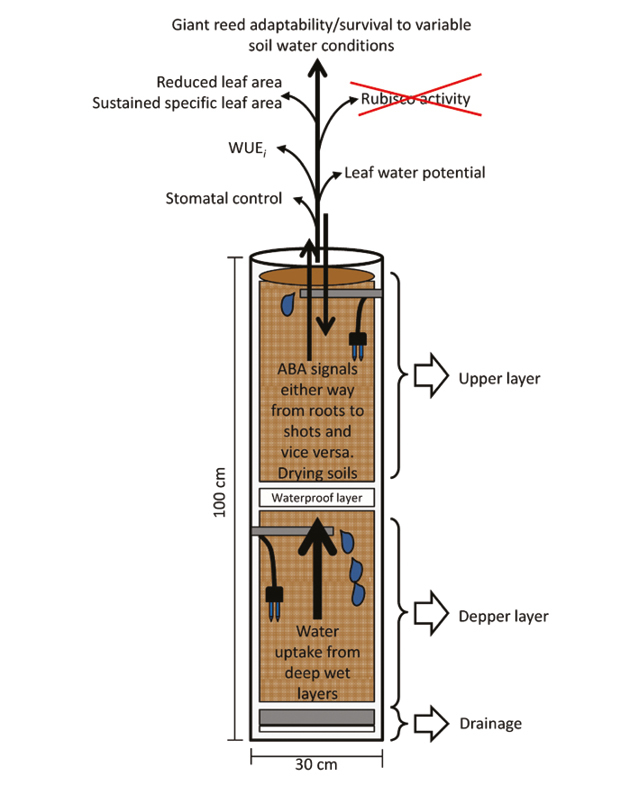
Annals of Botany 124: 605–615, 2019
doi: 10.1093/aob/mcz001
Giant reed (Arundo donax, Poaceae), a deep-rooted and well-adapted crop to drought, can survive prolonged dry periods by switching its main water sources. A deeper understanding of the dynamic interrelationship of root water acquisition, canopy water conservation, and abscisic acid (ABA) signals from both shallow and deep roots is needed to inform future breeding and selection in this potential bioenergy crop. Zegada-Lizarazu and Monti find that the regulation of deep root functioning and distribution, adjustment of canopy size, and root/foliar synthesized ABA played a central role in controlling leaf water potential (LWP) and transpiration efficiency. Based on these findings, more efficient and sustainable cropping systems could be developed, especially in arid and semiarid marginal areas where giant reed usually grows.
Authors: Walter Zegada-Lizarazu and Andrea Monti.
Acute drought induces populosoides in Populus deltoides
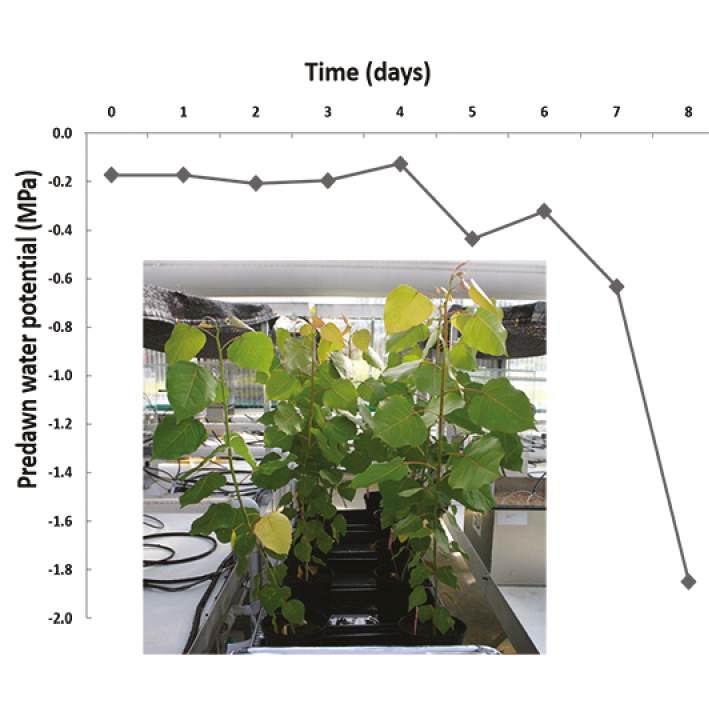
Annals of Botany 124: 617–626, 2019
doi: 10.1093/aob/mcz002
The drought tolerance of Eastern cottonwood poplar (Populus deltoides, Salicaceae) is thought to be due, in part, to its capacity to maintain low osmotic potential (i.e., high solute concentration) and to further lower osmotic potential of its tissues in response to drought through osmotic adjustment. Tschaplinski et al. used metabolomics to investigate the contrasting degree and nature of metabolite responses to cyclic versus acute drought stress. Whereas cyclic drought induced the largest responses in primary metabolism, acute onset of drought induced the greatest osmotic adjustment in secondary metabolism, especially populosoides. This involved the diversion of hydroxycinnamates of the lignin biosynthetic pathway and their conjugation with salicin of the constitutive defense pathway.
Authors: Timothy James Tschaplinski, Paul E. Abraham, Sara S. Jawdy, Lee E. Gunter, Madhavi Z. Martin, Nancy L. Engle, Xiaohan Yang, and Gerald A. Tuskan.
Effects of ABA dynamics on poplar acclimation to drought
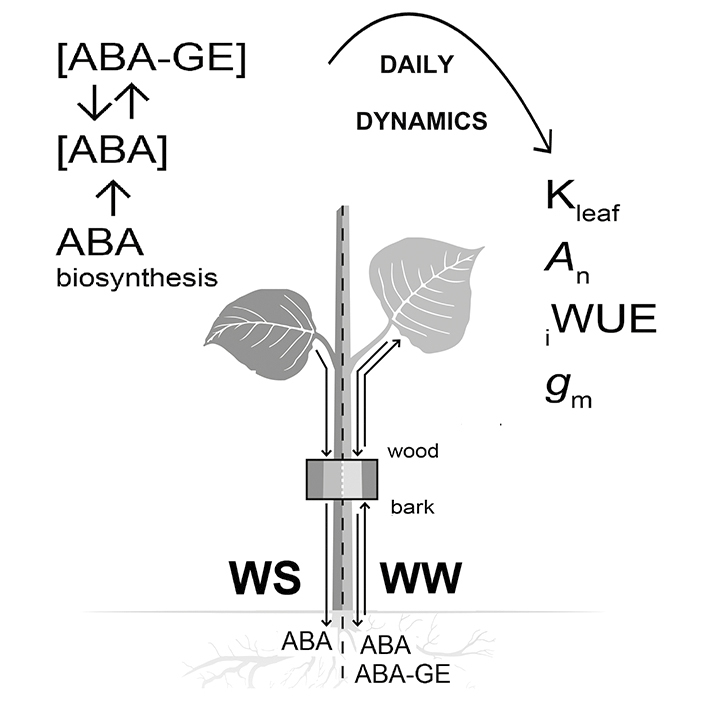
Annals of Botany 124: 627–644, 2019
doi: 10.1093/aob/mcz005
Characterisation of the biochemical and genetic mechanisms that underpin plant responses to water deficit are central to the development of more productive drought-tolerant biomass crops, including fast growing poplars. Brunetti et al. investigated how hormonal and hydraulic signals contribute to optimise stomatal, mesophyll and leaf hydraulic conductance under well-watered and water-stressed conditions in Populus nigra L. (black poplar, Salicaceae). This study demonstrates the tight regulation of photosynthetic machinery by abscisic acid (ABA) in different plant organs on a daily basis under both well-watered and water deficit conditions. This enables the optimisation of intrinsic water use efficiency and coordination of whole plant acclimation responses to reduced water availability.
Authors: Cecilia Brunetti, Antonella Gori, Giovanni Marino, Paolo Latini, Anatoly P. Sobolev, Andrea Nardini, Matthew Haworth, Alessio Giovannelli, Donatella Capitani, Francesco Loreto, Gail Taylor, Giuseppe Scarascia Mugnozza, Antoine Harfouche, and Mauro Centritto.
High genetic diversity in the non-toxic indigenous Jatropha curcas gene pool

Annals of Botany 124: 645–652, 2019
doi: 10.1093/aob/mcz008
Jatropha curcas (Euphorbiaceae) is a stem-succulent small tree of Meso-american origin. Its seeds are rich in oil and protein and Jatropha has therefore great potential as a biofuel, however current cultivars do not achieve the anticipated high seed yields and their seeds are toxic. The latter hampers the application of the protein-rich seed cakes in animal feed. Vandepitte et al. present the first systematic genomic diversity survey of non-toxic jatropha in its Mexican region of origin. Using genotyping-by-sequencing (GBS) of both non-toxic and toxic jatropha, they found high SNP diversity in non-toxic accessions, particularly in northern Veracruz, its likely region of origin. They also identified a genomic region involved in the suppression of seed toxicity. Conservation actions are urgently needed to preserve this non-toxic indigenous gene pool having potential as both fuel and animal feed.
Authors: K. Vandepitte, O. A. Valdés-Rodríquez, O. Sánchez-Sánchez, H. De Kort, J. Martinez-Herrera, E. García-Pérez, T. De Meyer, A. Pérez-Vázquez, and B. Muys, O Honnay.
Miscanthus response to combinations of salinity and drought
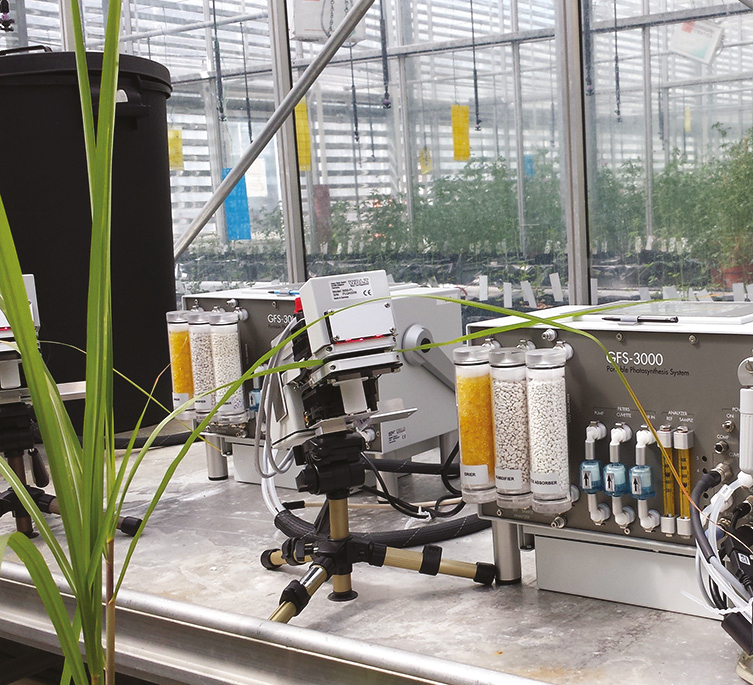
Annals of Botany 124: 653–674, 2019
doi: 10.1093/aob/mcz009
Arid and saline land area is a challenging but potentially significant resource for growing biomass crops such as Miscanthus (Poaceae), if yields are sustainable. Responses to drought and salinity sometimes overlap and selecting for drought tolerance traits may deliver tolerance against both stresses. Stavridou et al. grew commercial Miscanthus and three selected novel genotypes in drought, salinity and combination treatments. Overall, those genotypes able to tolerate drought, were also able to tolerate salinity although the impact of combining stresses was greater than individual stresses applied alone. A novel M. sinensis genotype with resilience to co-occurring stresses was also identified, that may be of value for future breeding of resilience to multiple stresses.
Authors: Evangelina Stavridou, Richard J. Webster, and Paul R. H. Robson.
Modelling biomass sorghum ideotypes
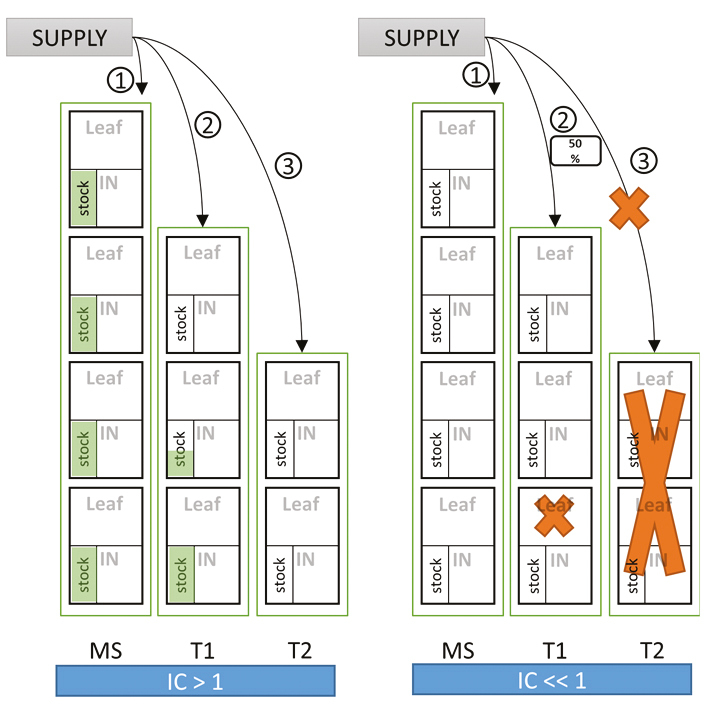
Annals of Botany 124: 675–690, 2019
doi: 10.1093/aob/mcz038
Using the sink-driven model, Ecomeristem, Larue et al. were able to simulate sorghum biomass production and phenotypic plasticity at the organ level, in terms of structural (‘fiber') and non-structural (‘sugar') biomass. Model outputs showed that sink-driven control of tillering cessation and mortality was important in explaining phenotypic variability for biomass production and sensitivity analysis revealed that light conversion efficiency and stem diameter are also key traits to target for improving biomass sorghum within existing genetic diversity.
Authors: Florian Larue, Damien Fumey, Lauriane Rouan, Jean-Christophe Soulié, Sandrine Roques, Grégory Beurier, and Delphine Luquet.
Scdr2 improves tolerance to salinity and drought
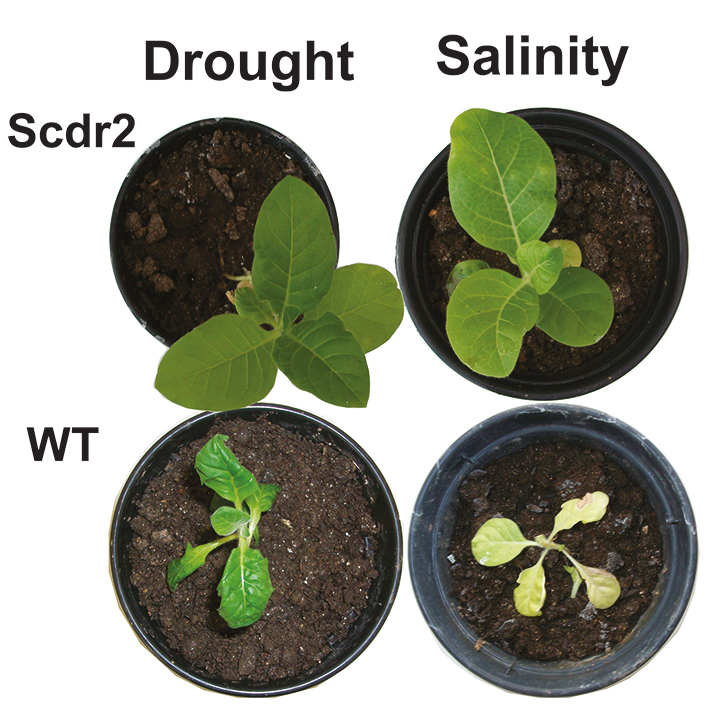
Annals of Botany 124: 691–700, 2019
doi: 10.1093/aob/mcz044
Modern agriculture is facing two main challenges: adapting to climate change and enhancing sustainability to help end world hunger. Plants activate a number of genes encoding proteins with unknown functions that are associated with mechanisms used to cope with stress resilience. Begcy et al. produced transgenic tobacco plants that overexpress a small sugarcane gene, Scdr2 (Sugarcane drought-responsive 2). They observed enhanced germination of seeds from transgenic plants under drought and salinity. Plants overexpressing Scdr2 showed higher rates of photosynthesis under stress conditions, compared with wild type plants. Therefore, Scdr2 is a potential target for improving sugarcane as well as resilience in other cropping systems.
Authors: Kevin Begcy, Eduardo D. Mariano, Carolina G. Lembke, Sonia Marli Zingaretti, Glaucia M. Souza, Pedro Araújo, and Marcelo Menossi.
Linkage and association mapping of complex traits in shrub willow
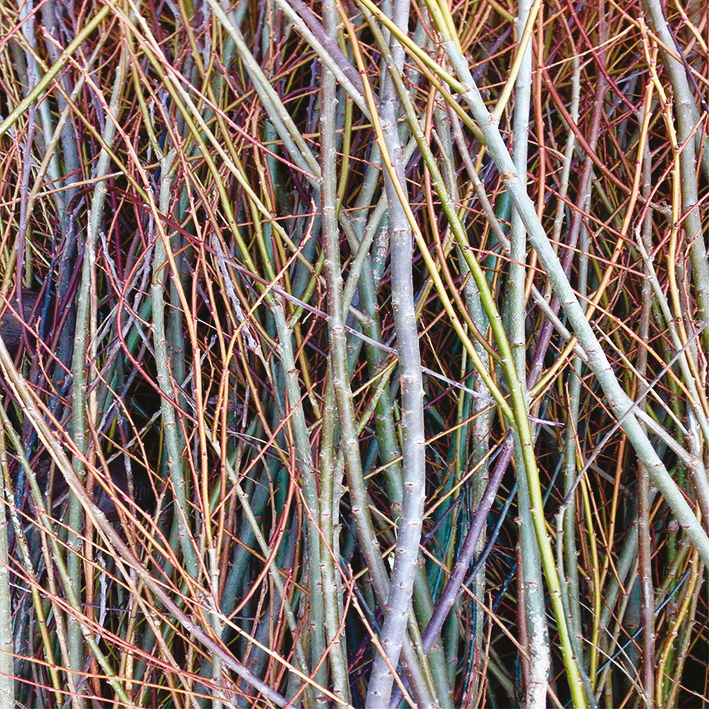
Annals of Botany 124: 701–715, 2019
doi: 10.1093/aob/mcz047
Utilizing both related and unrelated populations in genetic mapping studies can enhance the detection of loci associated with complex traits, especially in non-model crops, like willow (Salix spp., Salicaceae), a bioenergy crop. Carlson et al. use a full-sib F2S. purpurea mapping population and a North American naturalized S. purpurea diversity panel that were genotyped via genotyping-by-sequencing (GBS), and phenotyped for a suite of complex traits in replicated field trials spanning multiple years and environments. This study provides the first comparison of linkage analysis and linkage disequilibrium mapping approaches in Salix, and highlights both the complementarity and limits of these two approaches for elucidating the genetic architecture of complex bioenergy traits of a woody perennial breeding program.
Authors: Craig H. Carlson, Fred E. Gouker, Chase R. Crowell, Luke Evans, Stephen P. DiFazio, Christine D. Smart, and Lawrence B. Smart.
Gene expression under water stress in grasses
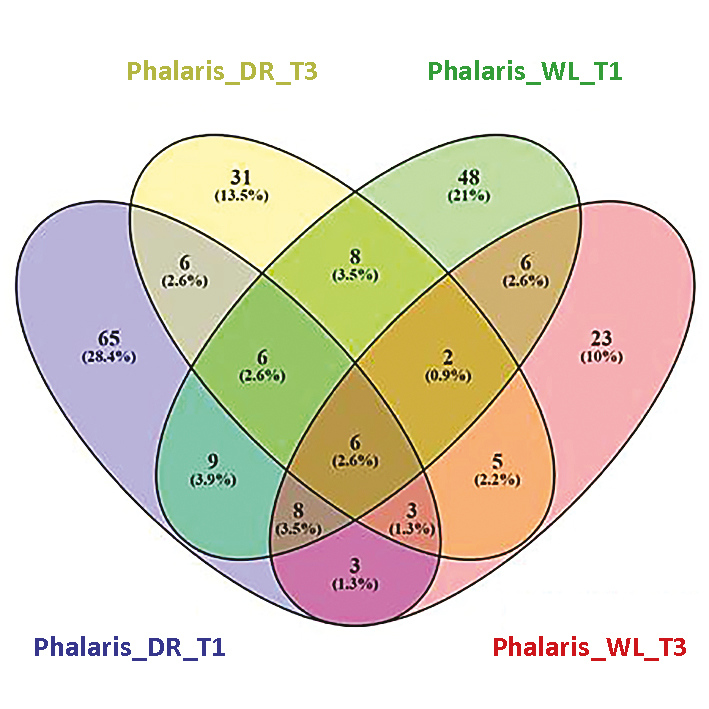
Annals of Botany 124: 717–730, 2019
doi: 10.1093/aob/mcz074
Perennial grasses, like reed canary grass (Phalaris arundinacea) and cocksfoot (Dactylis glomerata) are a global resource as forage and for alternative uses as e.g. in bioenergy. Since perennial grasses with enhanced coping mechanism towards adverse abiotic environmental stresses such as drought and waterlogging are very desirable, Klaas et al. subjected the grasses to drought and waterlogging stress. Physiological responses were recorded, reference transcriptomes established, and differential gene expression investigated between control and stress conditions including the application of a robust non-parametric method (RoDEO). Expressed genes under drought and waterlogging, including several novel stress-related genes classified as of unknown function. Potentially some of these transcripts can be used in genetic confirmatory studies such as genome editing to produce more environmentally-stable genotypes.
Authors: Manfred Klaas, Niina Haiminen, Jim Grant, Paul Cormican, John Finnan, Sai Krishna Arojju, Filippo Utro, Tia Vellani, Laxmi Parida, and Susanne Barth.
Population structure of Miscanthus sacchariflorus
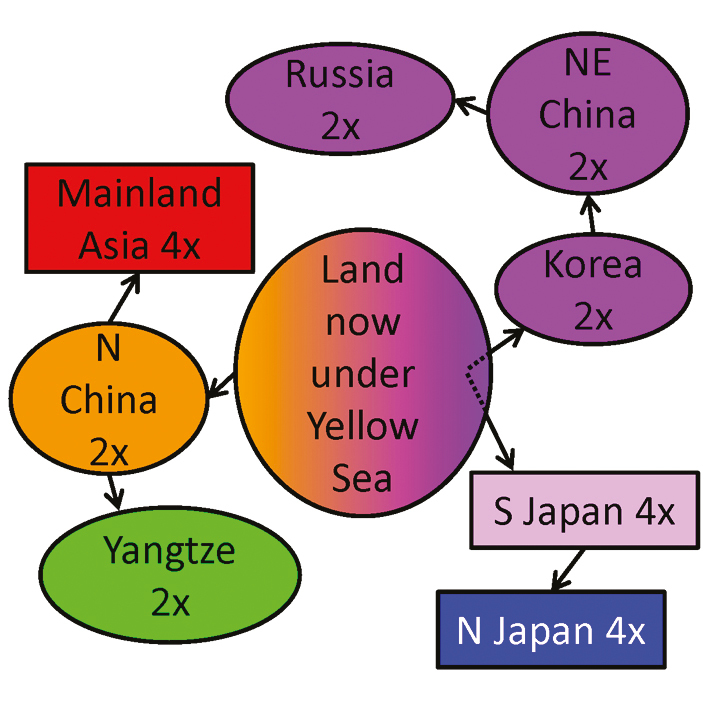
Annals of Botany 124: 731–748, 2019
doi: 10.1093/aob/mcy161
The perennial C4 grass Miscanthus sacchariflorus (Poaceae) is one of the parent species of the hybrid biomass crop M. ×giganteus. To support the breeding of new biomass cultivars, Clark et al. conducted a geographically-broad population genetic analysis of M. sacchariflorus, including wild collections from China, Japan, Korea, and Russia using RAD-seq SNPs. Their results indicate that M. sacchariflorus experienced less of a genetic bottleneck than M. sinensis during the Last Glacial Maximum. They also find that tetraploid M. sacchariflorus in mainland Asia and Japan likely arose from independent polyploidization events, yet in both locations polyploidy facilitated introgression from diploid M. sinensis.
Authors: Lindsay V. Clark, Xiaoli Jin, Karen Koefoed Petersen, Kossanou G. Anzoua, Larissa Bagmet, Pavel Chebukin, Martin Deuter, Elena Dzyubenko, Nicolay Dzyubenko, Kweon Heo, Douglas A. Johnson, Uffe Jørgensen, Jens Bonderup Kjeldsen, Hironori Nagano, Junhua Peng, Andrey Sabitov, Toshihiko Yamada, Ji Hye Yoo, Chang Yeon Yu, Stephen P. Long, and Erik J. Sacks.


